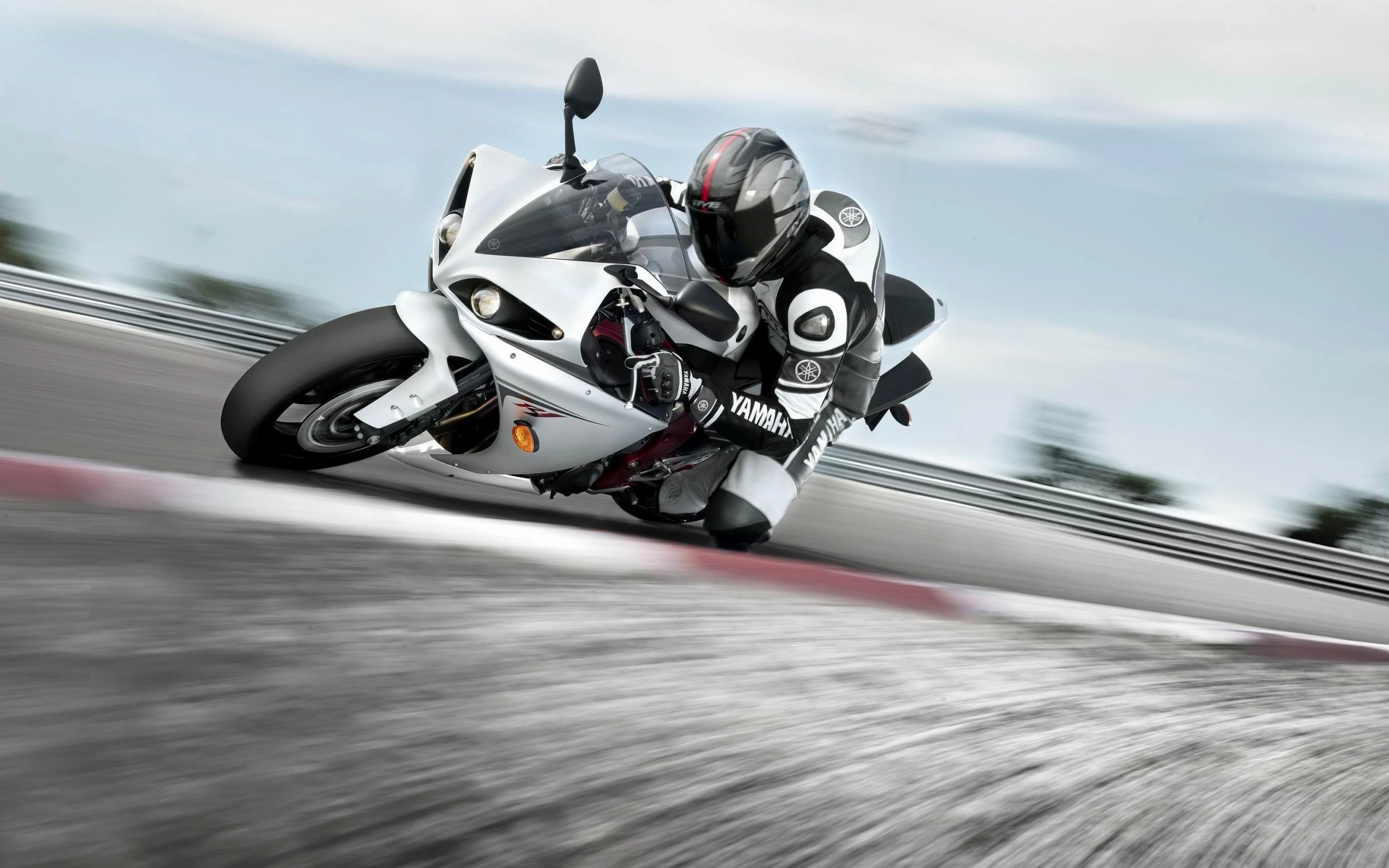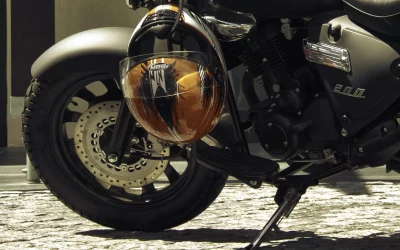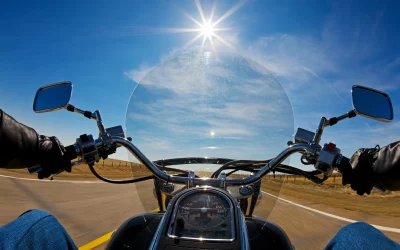The Most Common Motorcycle Accidents in Colorado Springs and How to Avoid Them
Everyone understands that riding a motorcycle is a risky way of transportation. It is, however, a lot of fun. It’s for this reason why people do it.
Every motorcycle rider should know a few fundamental safety guidelines, whether they ride a cruiser, sports bike, or touring a motorcycle.
The first is always to put on safety equipment. Helmets save lives and prevent catastrophic injuries in motorcycle accidents. Do you have any doubts? Helmets are around 37% effective in avoiding motorcycle fatalities and 67% effective in preventing brain injuries, according to the IIHS.
There are several more essential areas south of the neck that needs to be protected in addition to your head. Wearing protective gloves, jackets, trousers, suits, boots, and other gear may help you avoid significant motorcycle injuries like road rash.
Because you’re sure to fall off your bike at some time, if you ride a motorcycle long enough, you will almost certainly fall off at least once, just as it is inevitable that someone in a car will get into a fender bender.
A motorcycle safety training is also a worthwhile investment of time and money. The Motorcycle Safety Foundation provides training around the nation, ranging from the fundamental beginning sessions necessary to get a license to more advanced courses that educate motorcyclists on how to make evasive maneuvers and recognize a possible accident. For further information, go to the MSF website.
Consistently exercising your body and mind, as well as educating yourself, is an excellent strategy to be safe.
Free Consultation
In Person | Phone | Zoom
The Most Common Motorcycle Accidents
Motorcycle head-on collisions, high-speed sports bike wrecks, low-speed street bike wrecks, and motorcycle head-on collisions are all dangerous bike crashes to avoid. Unfortunately, you may not always be able to avoid the worst motorcycle accidents. Other cars who fail to see motorcycles in their route cause the majority of motorcycle accidents.
However, there are several precautions you may take to lower your chances of being involved in a serious motorcycle accident.
Here are seven frequent kinds of motorcycle accidents and how to prevent them.
The Most Common Motorcycle Accidents IN COLORADO SPRINGS
- Motorcycle Collisions Caused by Left Turning Cars
- Motorcycle Accidents Caused by Lane Switching
- Motorcycle Accidents Involving a Head-On Collision
- Accidents involving motorcycles that cause lane splitting
- Intoxication-Related Motorcycle Accidents
- Motorcycle Accidents When Turning a Corner
- Motorcycle Accidents at High Speed
- Motorcycle Collisions Caused by Left Turning Cars
When a car makes a left-hand turn in front of you, the most frequent motorcycle accident occurs. This is the single most deadly condition for motorcycle riders, accounting for 42 percent of all motorcycle-car collisions. The motorcycle is usually struck by the turning car when it is:
- driving right across a crosswalk
- driving by the car
- attempting to pass the car
This sort of collision is frequent between two ordinary cars, but the size and lack of protection on motorcycles make these collisions even more deadly for riders.
When a car collides with another while making a left-hand turn, the driver is almost always held to be at blame. That might not be the case if the biker was breaching the law or operating dangerously.
How to Avoid a Motorcycle Crash When Making a Left Turn
It would help if you predicted the other drivers’ next action to prevent this collision, as is the case in most circumstances. Apart from riding safely and wearing your protective gear, this is the greatest method to keep safe.
- Keep an eye out for signs that someone is ready to turn in front of you. Consider the following scenario:
- A car is waiting to turn at an intersection.
- In front of you, there is a space in the traffic because someone is waiting to go.
- They make a last-second head-maneuver to “see both ways.”
Begin to slow down if you detect anything like this, which you should be on the lookout for. Prepare to stop or take evasive action by moving to the furthest lane away from the car. Even if you can’t see a car waiting to turn, you should expect another motorist to move out if there’s a decent spacing in front of you.
It is a recognized truth that car drivers do not seek motorcycles mentally. Because that is what they drive, they have trained their minds to search for huge trucks exclusively. When you add that motorcyclists might be difficult to see, you have a potentially hazardous scenario.
Make eye contact with the other motorist as well. If they see you gazing at them—and you notice them staring at you—there’s the significant likelihood they’re aware of your presence and will not draw away. Check for obstructions in their vision, the direction their tires are pointing, and if they’re actively studying all traffic around them or gazing down at their phone.
You should be aware of what is going on around you at all times, just as you should be aware of what is going on around you in any scenario. Know where all the other cars on the road are; where you might move to get out of the way if required; and whether any additional dangers, such as a stop signal or a turn, are approaching.
Motorcycle Accidents Due to Lane Switching
An car attempts to enter your lane while right next to you in this classic motorcycle accident scenario. When you’re riding down a four-lane road next to a car that isn’t paying attention or can’t see you, this occurs. Motorcycles are readily occluded in a driver’s car’s blind areas.
Motorcycle Accidents Caused by Lane Switching: How to Avoid Them
Have you ever seen a semi-truck bumper sticker that reads, “If you can’t see my mirrors, I can’t see you?” That is, after all, how blind spots function. You should be able to see the car’s mirrors, and especially the driver’s face, which indicates that they can see you. To get out of a blind area, increase or decrease your speed.
You can’t always tell whether you’re in a blind area or if the other driver sees you, so keep an eye out for these signals that a car is changing lanes:
- turn signals are activated
- the wheels start to turn
- the motorist starts checking their mirrors
- the driver’s head swivels (indicating that they’re monitoring their blind areas)
Be proactive, vigilant, and defensive while driving, as with all of this advice. Motorcycle Accidents Involving a Head-On Collision
Motorcycle-on-motorcycle collisions account for 56 percent of fatalities in motorcycle accidents. Seventy-eight percent of the time, these collisions occur when a car collides head-on with a motorcycle. Head-on accidents between a motorcycle and a car, unsurprisingly, are typically lethal for the biker.
If a motorcycle comes to a sudden halt in a split second, the driver will either be crushed or thrown into the air and presumably onto a hard surface, depending on the speed.
This is the most frequent motorcycle accident, and it is also the most deadly.
When a car collides head-on with a motorcycle, both the motorcycle and the car often travel at high speeds. Unfortunately, this implies that the likelihood of the biker dying or being badly hurt increases considerably.
How to Avoid a Motorcycle Collision With Another Car
When attempting to avoid a head-on accident, the National Safety Council suggests following the “Four Rs”:
- Pay attention to the road in front of you.
- Take the Right Turn
- Slow down your pace.
- Get off the beaten path.
The same proactive and defensive methods we’ve been discussing apply to reading the road ahead. Always be monitoring the road ahead of you and keeping an eye out for anything that might cause a motorcycle accident.
Driving to the right means staying in the right lane if at all feasible. Keep to the edge of the lane if you’re on a two-lane road. You’ll be on the correct side of the road and safer against head-on crashes (and accidental lane changes).
If you detect the other driver swerving or not paying attention, slow down. Slowing you down by 30, 20, or even 10 miles per hour might be the difference between life and death.
Finally, riding off the road entails slowing down and merging onto the right shoulder or grass to prevent a head-on collision. Another reason why riding on the right side might be beneficial.
Accidents involving motorcycles that cause lane splitting
When a motorcycle travels between two lanes of stopped or slow-moving cars, generally at a traffic signal or during traffic congestion, this is known as lane splitting. Due to various considerations, lane splitting is a major cause of motorcycle accidents:
- the car’s and motorcycle’s close closeness
- the motorcycle’s ability to navigate in a smaller area
- Cars do not anticipate anybody past them in slower or halted traffic.
- Why Because cars do not need lane splits, drivers are unprepared.
If a motorcycle is involved in an accident while lane splitting, whether the motorcycle or the car is to blame depends on whether lane splitting is legal in that state. In Colorado, lane splitting is prohibited, making any accident caused by this practice the rider’s responsibility. However, although it is unlawful, it is a frequent sort of accident. Read this page for additional information about lane spitting and the law.
Keeping Lane Splitting Accidents at Bay
The easy remedy in Colorado is to avoid lane splitting. It’s prohibited for a reason: it’s usually dangerous and pointless. It also irritates other drivers who have to wait in traffic. If you decide to lane split, make sure you have enough distance to pass through safely without damaging anyone’s car or side-view mirrors.
Look for gaps in the stopped cars, which indicate that another car is attempting to enter into the next lane. Also, remember to observe head movement, tire direction, turn signals, and the other points given above.
Intoxication-Related Motorcycle Accidents
In 2014, a rider with a blood alcohol content of 0.08 percent or more was involved in 33% of fatal motorcycle accidents. This was 43 percent in motorcycle accidents involving just the rider. Whether you like it or not, alcohol plays a significant role in motorcycle accidents. This is most likely due to the social character of biking, which often entails visiting eateries or local hangouts to mingle.
I’m sure this isn’t news to anybody, but motorcycles don’t provide much in the way of protection to their riders. Alcohol-related crashes are far more likely to end in death or severe injury, generally to the motorcycle rider.
How to Avoid a Drunk-Driving Motorcycle Accident
It’s not a good idea to drink and drive. Limit yourself to one beer or drink each hour, whether going from bar to bar or hanging out with friends. Limit yourself to three drinks. If this isn’t your ideal night, ride with everyone to the destination, leave the bike there and find another route home. The ridesharing applications Uber and Lyft are fantastic for getting home on the cheap.
Motorcycle Accidents When Turning a Corner
For motorcycle riders, corners may be difficult. Although motorcycles are designed to have a lot of control, they may not be easy to compensate or adjust, particularly in turn. You may come across an area of sand, gravel, leaves, water, or other debris when turning a corner.
It’s simple to crash out if your front tire touches this substance and loses traction. Another technique to wipe out on a turn is to underestimate how tight the bend is, forcing you to take it too quickly. Because it’s difficult to see what’s coming next on curving roads, particularly those with elevation changes, this is a typical occurrence.
If a motorcycle driver takes a bend too fast and crashes, they risk additional harm from other cars and other road dangers. For example, suppose a motorcycle smashes into many cars crossing an intersection. In that case, the other cars crossing may not respond in time to escape them, resulting in serious injuries or perhaps death.
How to Avoid a Motorcycle Crash When Turning a Corner
Riding at a safe pace is the best approach to prevent this prevalent cause of motorcycle accidents. When you observe a tight turn or a danger in a corner, you want to proceed at a pace that allows you to respond quickly.
Slow in, fast out is a good rule of thumb to follow. To expand your range of view, enter a corner wide and gently. You may accelerate up and out of the corner. Once you’re satisfied, you can manage the turn, and there are no risks.
Keep an eye out for road signs. Familiarize yourself with the many sorts of signs that warn turns or dangers. Also, keep in mind that debris accumulates in particular parts of the road. Gravel or other tiny particles may gather somewhere that tires don’t regularly contact, such as shoulders or sliver-shaped sections in a curve, as fatigued drive the material to that spot.
Have you ever observed the triangle-shaped trash area near a crosswalk? This is the actual reason, and it may be rather smooth.
Some riding websites discuss sophisticated tactics for doing a turn while riding quickly, but the ideal approach is to go slowly and carefully. Only ride as quickly as you can see and as quickly as you are comfortable.
If you take a turn too rapidly, don’t panic; otherwise, you’ll straighten out and drive off the road—or worse, into oncoming traffic. Maintain your composure. Lean into the turn with confidence in your bike.
Maintain a straight line of sight ahead of the bend; your hands will follow your gaze. In addition, your bike is more capable of turning than you are. Do not slam on the brakes; you may lose traction or be thrown off. Keep your cool and ride it out.
Motorcycle Accidents at High Speed
A variety of individuals purchases motorcycles for a variety of reasons. However, its cost- effectiveness and ability to travel quickly are two of the most popular justifications. The first rationale is much less hazardous than the second. In 2014, speeding was the cause of death for 33% of all motorcycle riders killed in collisions.
Despite accounting for a tiny percentage of all bikes on the road, high-performance motorcycles cause a disproportionate amount of motorcycle accidents. These bikes are light and speedy, reaching speeds of up to 160 mph in certain cases.
The majority of sportbike riders are under 30, which makes it riskier since younger drivers are statistically less safe.
Rider sports motorcycles have a two to four times higher accident fatality rate than riders of traditional motorcycles such as cruisers and touring motorcycles. (This varies by kind of sports bike.)
Motorcycle Accidents at High Speed: How to Avoid Them
Operate your motorcycle at a reasonable pace to prevent this typical motorcycle disaster. Follow the posted speed limit. Even if you obey the rules, riding a motorcycle can be a lot of fun. Look for an intriguing area to ride.
To add to the excitement, look for routes with a lot of curves and elevation variations. If you are craving speed, search the internet for dedicated speed parks that enable riders to travel fast on a confined track while being safe. You may be able to locate a venue that hosts legal motorcycle drag racing.
Injuries Involved in Motorcycle Accidents
Traumatic brain injuries
Many motorcyclists get head injuries in accidents, resulting in irreversible brain damage. Traumatic brain injuries may leave a person disabled for the rest of their life, jeopardizing their professional prospects and quality of life.
All of this might happen just because someone chooses not to wear a helmet. If the biker is above the age of 21 and has insurance coverage, it can ride without a helmet in Colorado.
Motorcyclists may be flung off their motorcycles in an accident and suffer from road rash, often known as road burn. The motorcyclist’s exposed skin gets ripped away due to the friction created by being dragged down the tarmac at high speeds.
Broken/fractured bones are a frequent injury in various accidents, yet they may still cause considerable harm. Motorcycle crashes may inflict enough stress to break numerous bones in the same body location all at once, leaving a person with long-term health problems.
Internal injuries
Motorcycle accidents may result in a variety of internal ailments. A person might cope with a variety of challenges depending on the place and intensity of the trauma.
Internal injuries from motorcycle accidents are usually serious.
Experienced Motorcycle Accident Attorneys in Colorado Springs
Free Consultation
Warrior Motorcycle Accident Attorneys is a firm that represents people who have been injured in motorcycle accidents.
Warrior Motorcycle Accident Attorneys is an experienced motorcycle accident litigation practice with significant compensation for motorcycle accident victims. Don’t make any assumptions regarding your accident or culpability.
Call Warrior Motorcycle Accident Attorneys instead, and they’ll look into every detail of the accident, including a virtual reconstruction if required. We’ll figure out who’s really at fault in this situation. After a terrible motorcycle accident, our motorcycle accident attorneys are ready to assist you.
Call Warrior Motorcycle Accident Attorneys for a free case review if you were hurt in a motorcycle accident. Medical expenditures missed wages, and pain and suffering may all be covered by a financial settlement. Call 719-300-1100 right now.







